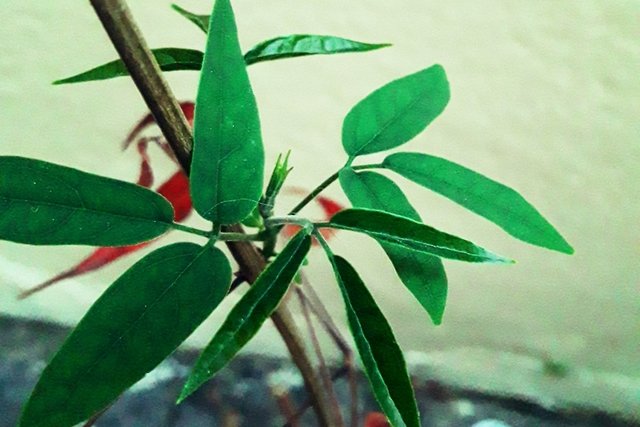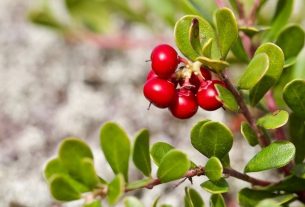Pariri is a medicinal plant, of the species Arrabidaea girlrich in cyanocobalamin, cajurin, carajuflavone, luteolin and kaempferol, with anti-inflammatory, antihypertensive, healing and antioxidant properties, and is therefore popularly used to assist in the treatment of psoriasis, high blood pressure, inflammation in the uterus or intestinal cramps , for example.
The normally used parts of this medicinal plant, also known as cipó cruz, carajurú and crajiru, are the fresh or dried leaves, for preparing tea, poultices or sitz baths. Furthermore, when fermented, its leaves provide a red dye that serves as a pigment for cotton.
Pariri can be purchased at herbalists, health food stores or compounding pharmacies, and should be used under the guidance of a doctor or other health professional who has experience with the use of medicinal plants.

What is it for
Pariri is popularly recommended for:
- Intestinal colic;
- Stomachache;
- Diarrhea with blood;
- Menstrual cramps;
- Hemorrhage;
- Anemia;
- Vaginal discharge;
- Inflammations in the uterus;
- Cystitis;
- Wounds or ulcers on the skin;
- Psoriasis;
- Impact;
- Pyoderma;
- High pressure;
- Conjunctivitis;
- Insect bites.
Furthermore, some studies (1,2) showed that pariri can help reduce the toxic effects of chemotherapy or radiotherapy for the treatment of breast cancer, or head and neck cancer, such as oral mucositis, for example. However, more studies are still needed to prove this benefit.
Although it has many benefits, this medicinal plant should not replace medical treatment or be used without guidance from a doctor or healthcare professional with experience in the use of medicinal plants.
How to use
The normally used part of pariri is the fresh or dried leaves from which its active substances with medicinal properties are extracted, for preparing tea, poultices or sitz baths.
The main ways to use pariri are:
1. Pariri tea
Pariri tea must be prepared using fresh or dried leaves and can be used to help treat diarrhea, colic or anemia, for example.
Furthermore, this tea can also be used as a poultice on the skin to treat wounds or inflammations.
Ingredients
- 1 teaspoon of chopped pariri leaves;
- 250 mL of water.
Preparation mode
Boil the water and add it to a container containing the pariri leaves. Then let it rest for about 10 minutes, strain, wait for it to cool and drink 1 cup of tea, up to 3 times a day. The tea must be consumed fresh within 24 hours of preparation.
The amount of pariri tea that should be taken per day should be advised by the doctor or herbalist, according to the condition being treated.
2. Gambling poultice
The pariri poultice can be used in cases of hemorrhage, diarrhea, uterine inflammation, skin wounds, or insect bites, for example.
Additionally, pariri extract can be used to eliminate the swelling and venom of snakes in the Amazon region, when applied up to 6 hours after the bite.
Ingredients
- 4 pariri leaves;
- Half a glass of water.
Preparation mode
Place the water and pariri leaves in a clean, dry container, and crush the pariri leaves well. Apply this poultice to the affected skin for approximately 30 minutes, up to 3 times a day.
3. Sitz bath with pariri
The pariri sitz bath can be used to treat uterine infections or vaginal discharge, for example. See other sitz baths for vaginal discharge.
Ingredients
- 1 tablespoon of pariri leaves;
- 1 liter of water.
Preparation mode
Boil the water and then add it to a container containing the pariri leaves. Strain the infusion, let it cool and take a sitz bath, placing the mixture in a basin or bathtub for 5 minutes, at least once a day. Do not apply inside the vaginal canal.
Possible side effects
Pariri is considered safe when used in recommended amounts, as it has a low toxin content. However, when used in excess it can cause an excessive decrease in blood pressure.
Therefore, the use of pariri should only be done with medical advice or from a health professional with experience in medicinal plants.
Who shouldn’t use
Pariri should not be used by children, pregnant or breastfeeding women, or by people who are being treated with anticoagulant medications.
Furthermore, this plant should not be used by anyone allergic to anisic acid, cajurin, tannins, bixin, saponin, assimilable iron and cyanocobalamin.
Pariri should be used with caution by people who have low blood pressure.

Sign up for our newsletter and stay up to date with exclusive news
that can transform your routine!
Warning: Undefined array key "title" in /home/storelat/public_html/wp-content/plugins/link-whisper-premium/templates/frontend/related-posts.php on line 12
Warning: Undefined array key "title_tag" in /home/storelat/public_html/wp-content/plugins/link-whisper-premium/templates/frontend/related-posts.php on line 13



